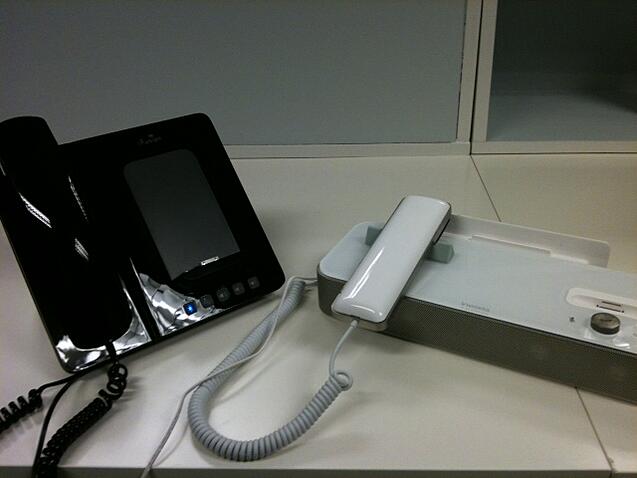‘Time to Re-invent the Desk Phone’ is an interesting piece by Verge1 Consulting President and telecom conference frequenter, Dave Michels. In the post, he first reviews the various shortfalls of the three most commonly used types of phones in today’s office—desk phones, mobile phones, and soft phones—and then describes a list of features missing in current devices that, if implemented, would take the business phone to the next generation.
Michels's list of ‘why do we not have this yet?’ features is extensive, and if a manufacturer were to follow it to the T, I would guess that their reinvented business phones would probably be priced somewhere in the ballpark of a thousand dollars.
On the one hand, I agree with Michels when he says that desk phones are behind the times; "a time traveler from the 1950s would have no problem operating today’s phones," he put it. It would be very refreshing to get a modern take on the business phone, one that collects all the different ways of communicating in today’s business environment—presence, IM, video, voice, and perhaps even social media—and puts them all into one device. A true ‘unified communications’ device.
On the other hand, there's a good argument for producing devices with the familiar interface of a traditional analog phone. Let’s be real here. I would say the majority of people in the work place are unfamiliar with VoIP. For these people, a user interface that they’re used to, an IP phone that looks and feels almost exactly like their old analog business phone, might not be such a bad idea. Furthermore, if we’re always talking about how much money VoIP can save businesses (and we are), it doesn’t make a lot of sense to focus too much on phones that may be prohibitively expensive. I can’t speak for everyone, but our customers are primarily small to medium sized businesses that don’t want to shell out tens of thousands of dollars on the latest and flashiest equipment.
It’s interesting, but not surprising, that smart phones and tablets caught on so quickly in the consumer marketplace while similar devices are taking much longer to achieve the same level of penetration in the workplace. This certainly isn’t for the lack of trying. Take Grandstream, for example. Grandstream has always focused on making VoIP phones affordable. Their new GXP 1405 is the most affordable HD desk phone we’ve ever tried. At the same time, they—like any other business—want to seem at the forefront of their industry, and are heavily promoting the Grandstream GXV 3175, their Android-based multimedia business communications device. I have no idea what Grandstream’s sales breakdown is, so I can’t really speak to the success of their multimedia phones, but I can say that there are many more ‘old-fashioned’ Grandstream desk phones registered with our service than GXV 3175s.
It’s not just Grandstream, either. Plenty of other manufacturers have released devices aimed at replacing or enhancing the office desk phone. The Aastra 6739i features a color touch screen LCD and is loaded with XML apps. The Polycom VVX 1500 ups the ante with video conferencing. There’s the Glass from CloudTC, an Android based device that feels absolutely incredible to use, the Cius from Cisco, and plenty of other takes on the ‘modern’ desk phone we have yet to get our hands on. All of these products are aimed at doing one thing: making the desk phone a bit more useful and a bit less boring. We can certainly get on board with that, but I somehow can’t shake the feeling that many business customers look at these products and say something along the lines of ‘Wow, that’s a really neat product. I had no idea desk phones could do that… now show me something I’ll actually buy.”
Of course, I’m not saying that phone manufacturers should stop trying to innovate. Instead I’m just recognizing the somewhat difficult position they’re in. Appealing to businesses with strict budgets is quite different from marketing to consumers. Businesses often expect that desk phones will last them 5+ years, so if a company outfitted their offices with new phones in 2009, they’re probably not going to looking for replacements for at least a few more years.
No one really knows when the tipping point will be, and all anyone can do is keep putting out innovative products and hope that the next one causes the landslide that pushes the whole industry forward. Take, for example, these new phones we just got, the iFusion from Altigen and the NVX 610 from Invoxia.

Both these phones do something I’ve never seen before (some of the more ‘in the know’ people reading this will probably think I live under a rock): using Bluetooth to link my iPhone with a docking station that includes a handset and speakerphone. This allows me to take make and take calls from the SIP soft phone application on my iPhone just as I would on my regular desk phone and offers added benefits such as improved voice quality. This is as close to mobile convergence as I’ve seen. Much more on the iFusion and NVX 610 after we finish putting the devices through our labs.

